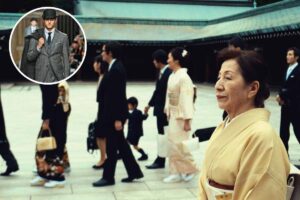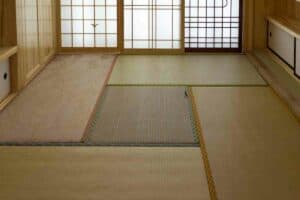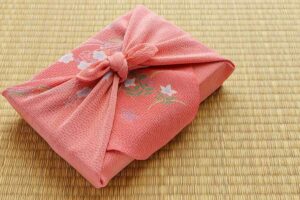Elevated from a mere thought process to an essential part of everyday existence, aesthetics in Japan is considered a way of life.
In fact, it is so interwoven within the culture that there are specific principles one should follow if it is a Japanese interior design you intend to employ.
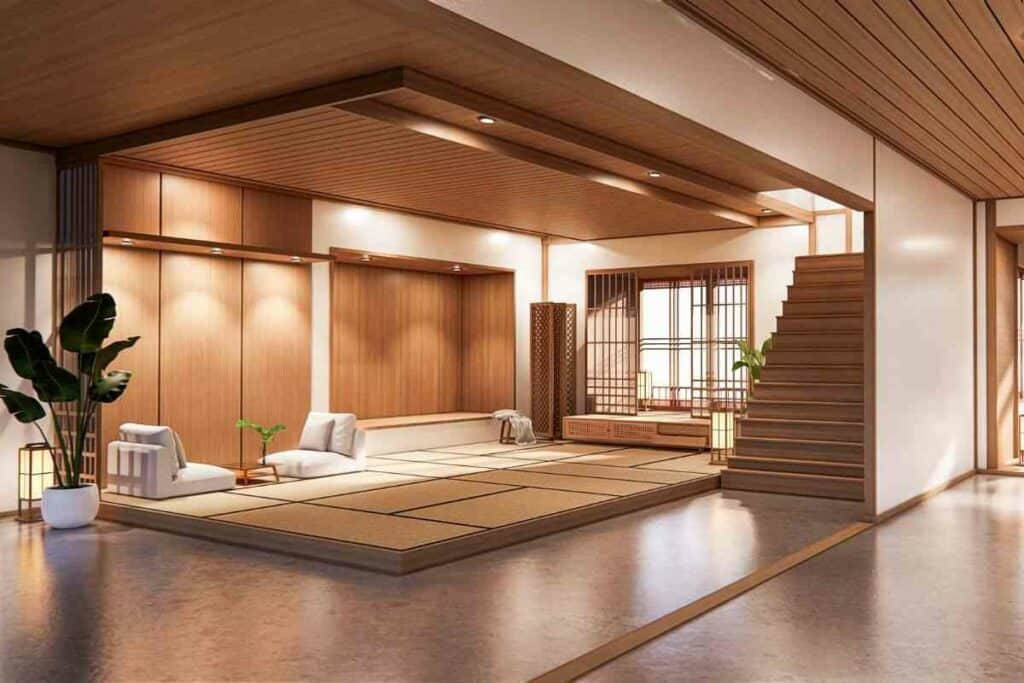
In this article, you will find an outline of the seven main principles that you should know.
Table of Contents
What are the main principles of Japanese interior design?
Not to be confused with the five Japanese virtues or even the seven rules of the whole culture, the seven principles of Japanese interior design that you should know, consist of the following:
- Seijaku (静寂)Tranquillity
- Shizen (自然) Effortlessness
- Kanso (簡素) Simplicity
- Fukinsei (不均整) Asymmetry
- Shibumi (自然) Lofty Dryness
- Yugen (幽玄) Gracefulness
- Daisuzoku (脱俗) Unconventionality
Each of these compliments the other and all are interconnected in order to create a sense of Wabi Sabi or the appreciation of the beauty of imperfection.
These seven principles of Zen Buddhism filter into all aspects of Japanese life.
Key concepts of which, are Balance and Moderation. They were first outlined in a piece of writing called ‘Zen and the Fine Arts’ by Hisamatsu in 1971.
1. How does Seijaku translate to interior design?
Incorporating both stillness and tranquillity into a living space is something that the Japanese have mastered.
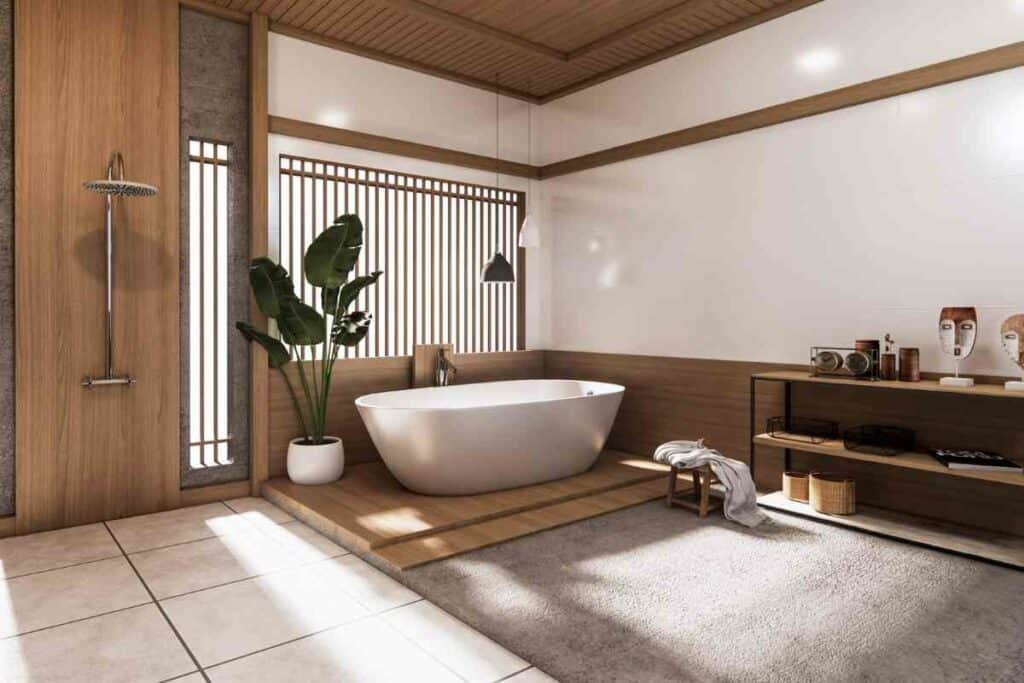
This particular principle feeds into other principles. Bringing nature into your home and keeping things simple will add to the tranquillity of it.
As many aspects of Japanese culture are concerned with balance, bringing in a little sensory chaos in the form of asymmetrical imperfections, subtly counteracts the calm.
Seijaku is achieved, essentially, by creating a balance among the other principles.
2. How does Shizen manifest as interior design?
Shizen is the principle that holds everything natural over all that is manufactured. A balanced manufactured home will invite nature inside and drown out most artificiality.
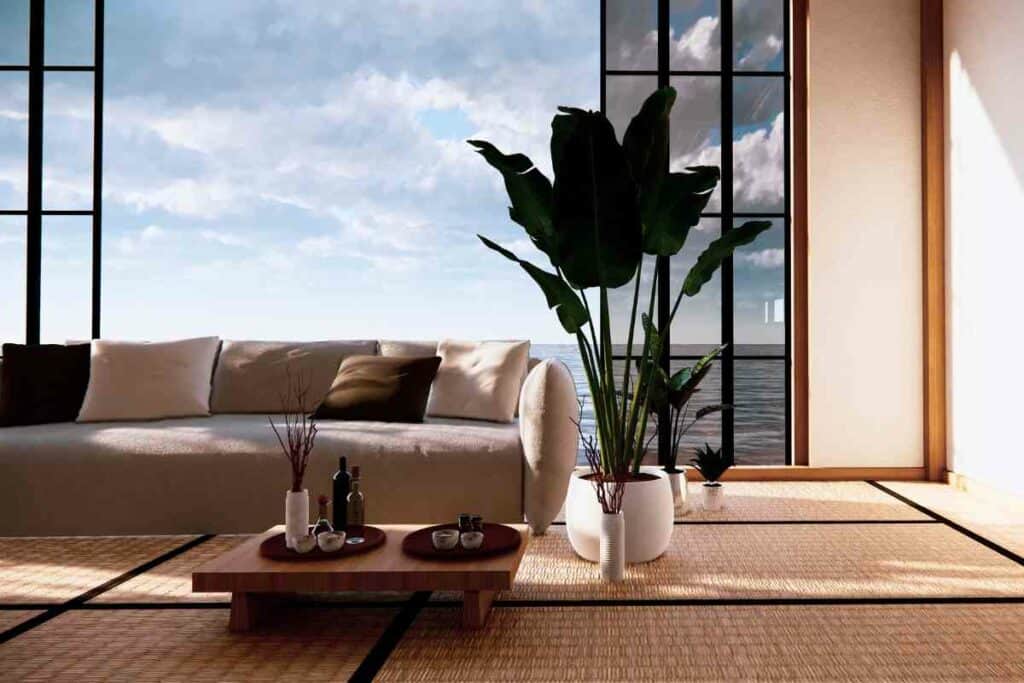
Obviously, not to go over the top and flood your rooms with greenery, but to have some plant life present in all spaces.
Not only does this boost the oxygen levels within your home and humidify your air, but it compounds that sense of Seijaku that you want to achieve.
Clearly, these can be any and all types of house plant and there is an abundance from which to choose. Some people may stick to the simplicity of a few spider plants for the easy maintenance.
There are, however, some common Japanese choices:
- Japanese Bamboo
- Japanese Elm Bonsai
- Japanese Fern & Painted Fern
- Japanese Peace Lily
- Japanese Maple
- Azalea
- Kokedama
3. How do you apply Kanso in interior design?
Keeping décor and furniture simple and minimalistic, Japanese homes are rarely a place of clutter.
Even before Marie Kondo’s Spark Joy book, less has always been more when applying Kanso. Even storage space is kept well-organised and to a minimum.
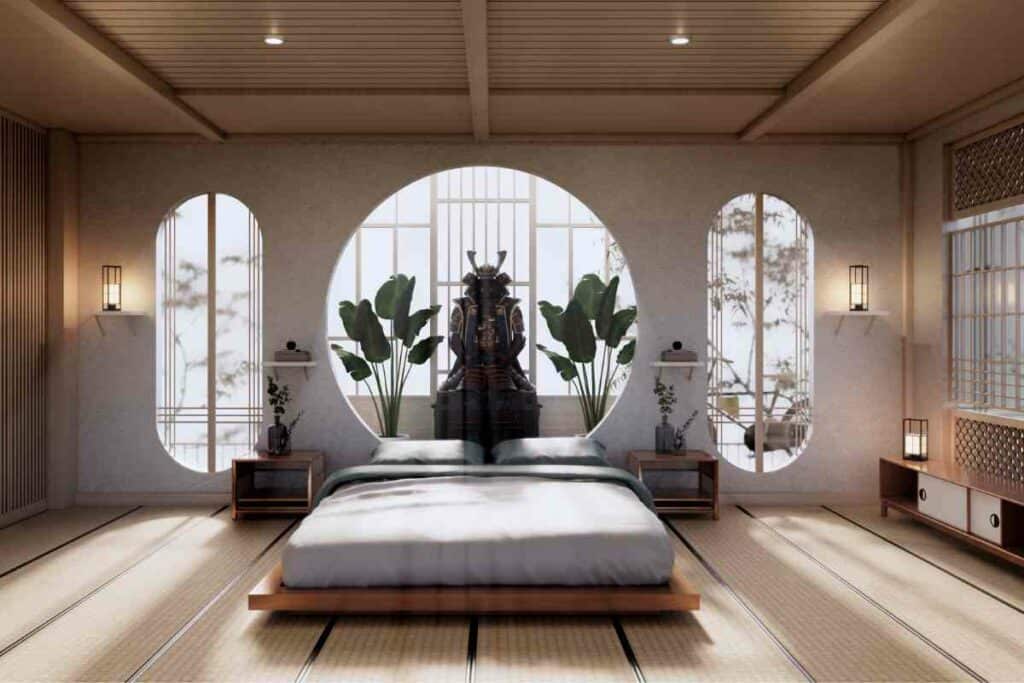
If you don’t need it, don’t keep it and if you do need to keep it: store it in an orderly fashion.
An organised space reflects an organised mind and life. Clear and almost empty spaces (ma) is foundational to this principle of simplicity.
Key Point – This is often referred to as Koko (austerity) and includes color and tones. So, Japanese interior design mostly sticks with neutral colors. Plain white or beige walls are common, with minimal wall mountings and plenty of light. Absence is key. Linking closely with Kanso, a sense of emptiness is created: a minimalist space.
4. What does the principle of Fukinsei look like?
When you consider what a symmetrical home might look like, you can even picture a typical western design.
Put a straight, vertical line down the middle and you might even have a mirror image either side from some angles.
Perfection has always been the futile enterprise of many human beings, but you won’t find it in a Japanese home.
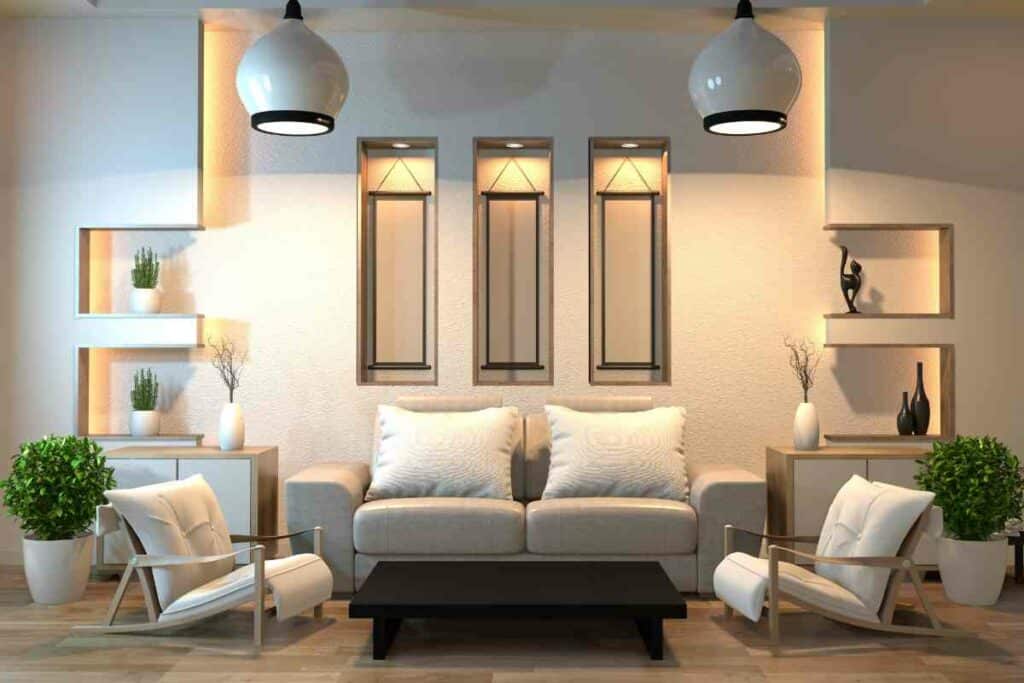
Contrasts and clashes are favoured over matches and uniformity while still maintaining a sense of balance.
Bringing in a little “oddness” to a Kanso-inspired space will only serve as an equaliser, complimenting the clarity.
Minimal furniture choices may not match, and that’s okay. Gracefully accepting and even welcoming imperfections is central to Japanese interior design.
Interesting Note – The Japanese find beauty in imperfections because imperfections are part of existence. They are part of nature and should be embraced.
5. What is the principle of Shibumi to interior design?
Shibumi translates literally as ‘bitter tasting’ but, in the principles of interior design, the Japanese refer to it as the refusal of flashiness and extravagance.
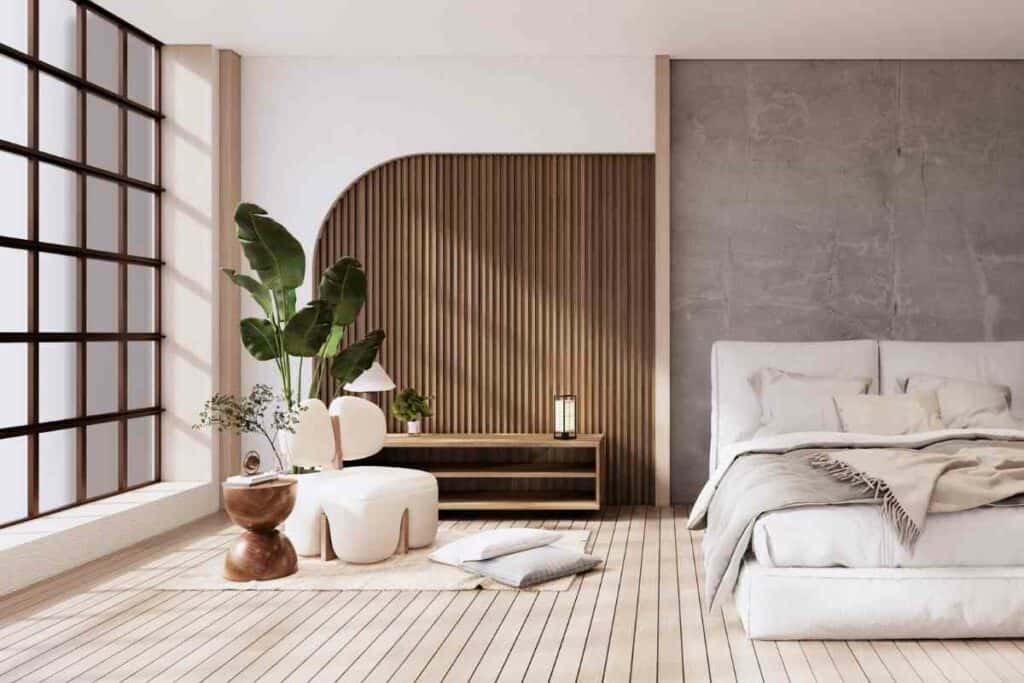
Nothing needs to be over the top. Similar to the principle of Kanso, keeping things without embellishment is very much favoured.
Beauty is seen in a minimalist approach. This principle combines others previously mentioned when you consider that it favours the natural and unaltered: the sublime beauty of Simplicity.
6. What is Yugen as a principle of interior design?
To put it plainly, Yugen is the idea that a suggestion or hint is more powerful than an outright statement.
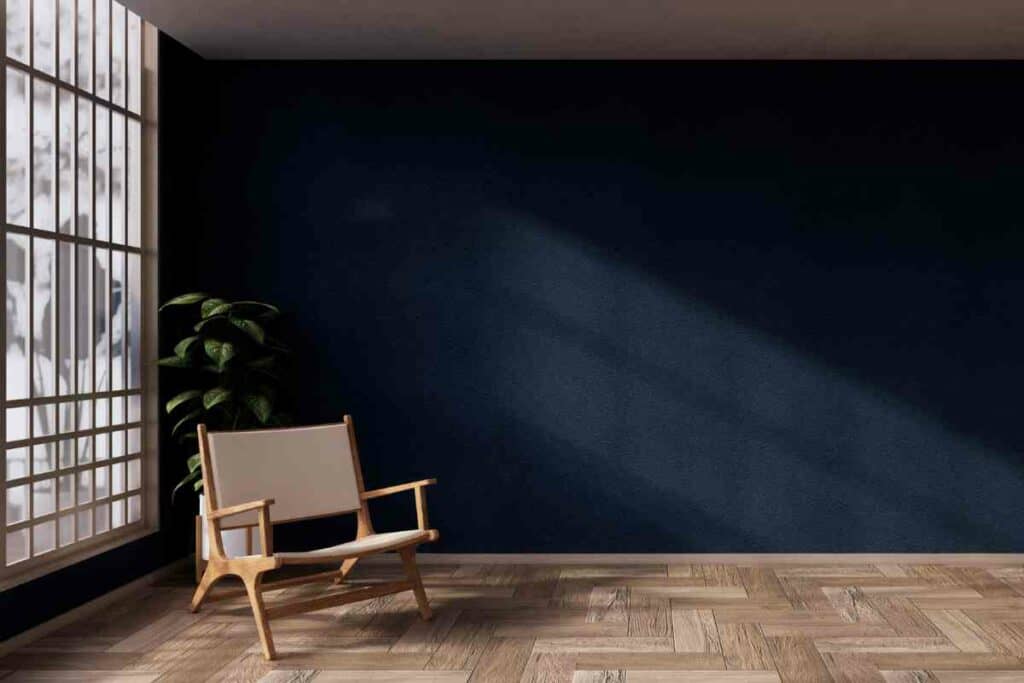
Having a single focal point within a minimalist space would, for instance, be a perfect example of what this aesthetic principle is all about.
There is a lot of beauty to found in subtlety. A singular plant in a relatively empty space, or a minimalist fireplace built into a plain wall, there are many ways to implement Yugen.
As with previous principles, less is always more.
7. How is Daisuzoku interpreted in interior design?
The element of surprise encapsulates the philosophy behind this principle.
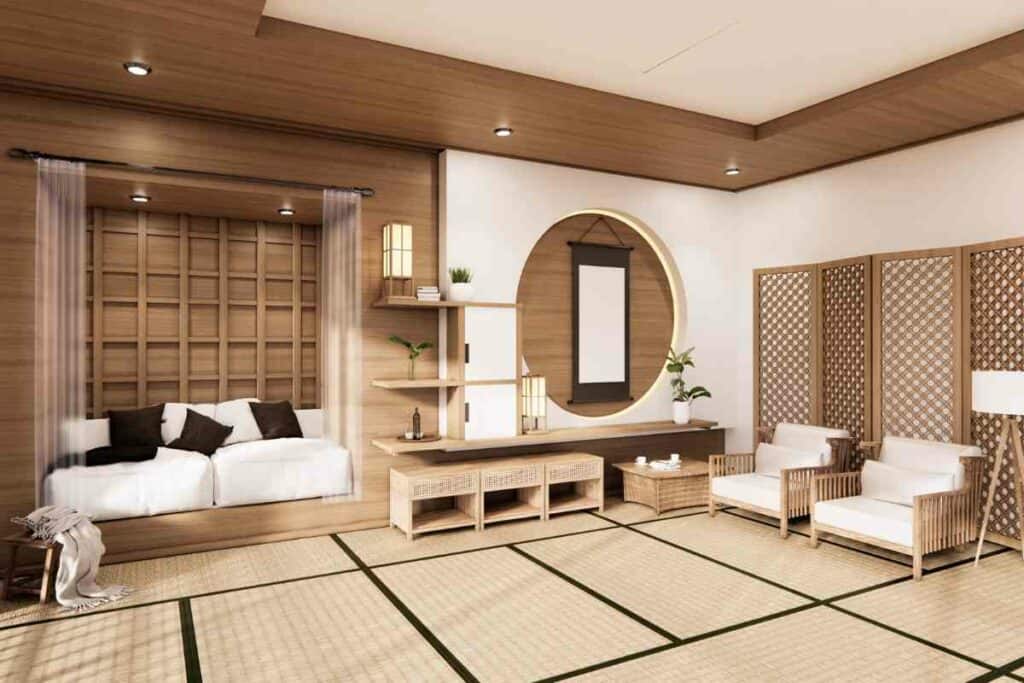
An element of invading unconventionality within a predominantly conventional space, Daisuzoku inspires a sense of liberty from the expectations of normality.
Again, we see a link with balance. Creating a minimalist environment and including something unconventional and unexpected would symbolically break with tradition.
A crack within a completely smooth surface could balance it.
That is not to say that you need to glue a chair to your ceiling to adhere to this principle, but don’t be afraid to mix things up a little.
Final Thoughts
You will find many interpretations of these principles should you decide to look for yourself. Many sources combine certain ones because they are so closely aligned.
The above is simply one interpretation and organisation of such ideas but one thing is consistent throughout: balance.
As long as your design creates a sense of moderation and embraces nature, you’re sure to be on the correct path to reflecting you gracefully tranquil existence.
- Best Japanese Knives Top Picks for Every Kitchen
- Japan’s Bold New Trend: Dressing Like a British Gentleman (or at Least Trying)
- 7 Best Japanese Sunscreen Products You Can Buy Online
- 5 Best Japanese Makeup Brushes for a Flawless Finish
- 7 Benefits Of Tatami Mats You Should Know
- The Best Furoshiki Wrapping Cloths: Inspiration, Ideas & Cloths You Can Buy


